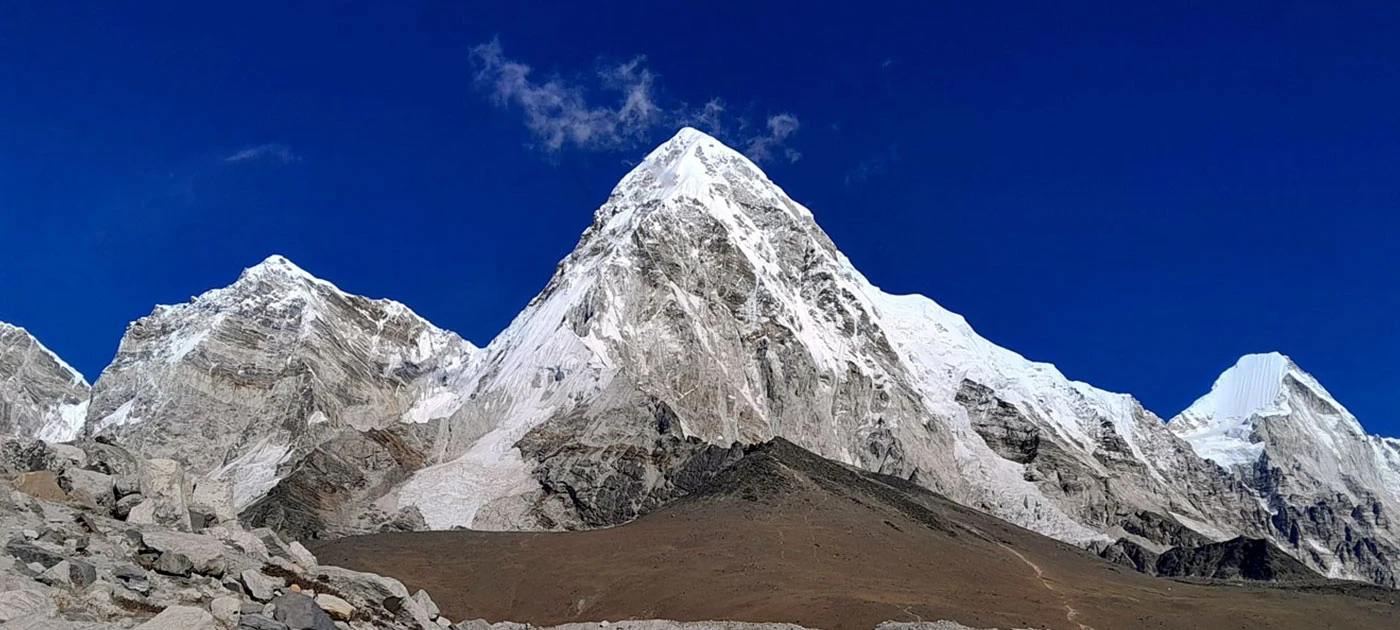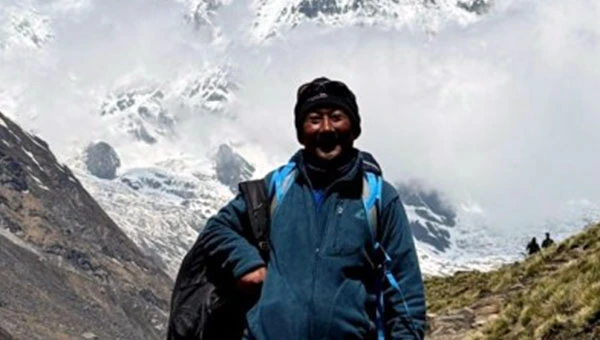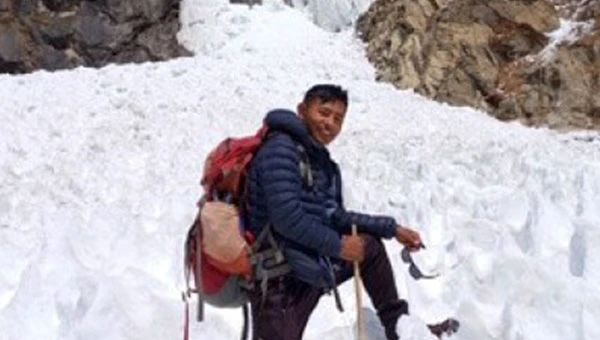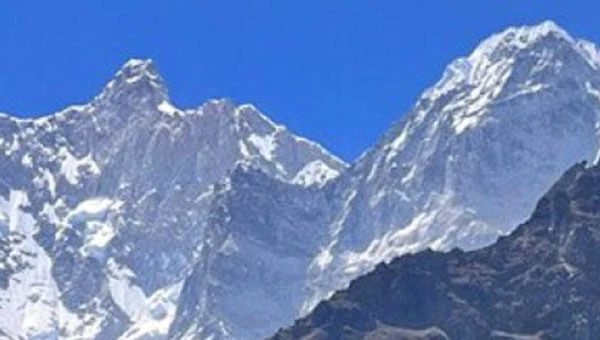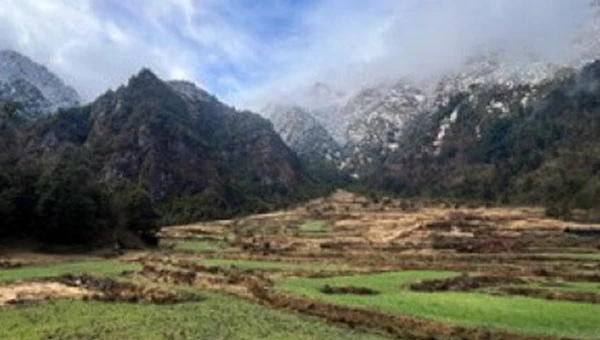The Everest Base Camp trek is arguably the most exciting trek that many travelers look forward to, offering the opportunity to view stunning sights, interact with diverse cultural sites, and experience the physical challenge of high-altitude trekking. Therefore, it is crucial to arm oneself with the best resources to propel this incredible journey to the next level of success. You may undoubtedly have your expectations and preferences for this trek, regardless of whether you are a professional hiker or a first-time trekker. Having a wealth of information about those aspects can offer significant benefits to the hike overall, as well as guarantee your safety, which is a plus.
If you prepare well and make all necessary considerations with valuable tips, the beautiful sceneries and cultural interactions evident while on the Everest Base Camp trek will be fully grasped. Here are some of the valuable tips for a successful Everest Base Camp Trek:
Prepare Yourself Mentally
Regarding EMOTIONAL preparation for the Everest Base Camp trek, there is a much longer list of things to prepare for. This hike can also be physically and psychologically tiring, as much as it is tiresome due to altitude and distance. Libido, as should health, be embraced with positivity; its indicators are best taken in increments; life is full of surprises. Mental preparation means not getting impatient with yourself and not expecting the future to improve; instead, it means accepting the process rather than expecting a change to come suddenly. In Addition, do not forget to celebrate minor achievements, savor the environment before, during, and after the trip through different mind tricks, and learn strength from the awesome terrains and the company of other trekkers. This way, one gets to be as keen as the mind.
Train Yourself for the Journey
Preparation for the trek to the EBC is also crucial due to the rigors involved in the treacherous adventure. The adventure entails a lot of hiking, and in some cases, the paths are steep. Rebels must be set up to make the climb more manageable, and your body will feel the strain after a certain period. Cardiovascular exercises, such as running, cycling, and hiking, alongside circuit training for the legs and the tummy muscles, will prepare you to endure the rigorous day hikes. In addition, getting the body accustomed to working under low oxygen concentration by gradually taking it through altitude training and then taking it through a series of treks to mountains can minimize the effects of altitude sickness considerably, making your mountain climbing experience safer and more fun.
Pack a First-aid Kit
Some items you should always have in your kits include bandages, adhesive tapes, antiseptic wipes, blister treatments, and pain relievers such as paracetamol. g. The medicines include painkillers like Paracetamol and ibuprofen, anti-motion sickness medicine, anti-diarrhea medicine, and anti-height sickness medicine. g. , acetazolamide. Pack Rx for a personal trip, a thermometer, a pair of tweezers, and the medical equipment necessary for your treatment. An A1 unformatted first aid guide and a small card with contact information for emergency services are also required. Pack it somewhere you can reach it easily while in your daypack, and ensure all team members are fully aware of the kit’s location and contents.
Have Some Information about Altitude Sickness
The conditions caused by altitude can also be referred to as acute mountain sickness (AMS), which can be a significant issue for trekkers when they get to some of the high altitudes, such as those seen in the Everest Base Camp trek. Some symptoms are headache, vomiting, dizziness, and constantly feeling weak, and it can be very intense if not checked well. AMS is avoided by extending the time spent at higher altitudes, allowing the body to adapt to lower grades of oxygen asymptote. Minimizing alcohol consumption, increasing water intake, and reducing the intake of heavy carbohydrate meals also play vital roles in handling these symptoms. If the signs of this last type appear, it is necessary to inform a guide about their presence, and in case if they do not disappear after some time, one should start descending to a specific limit of elevation.
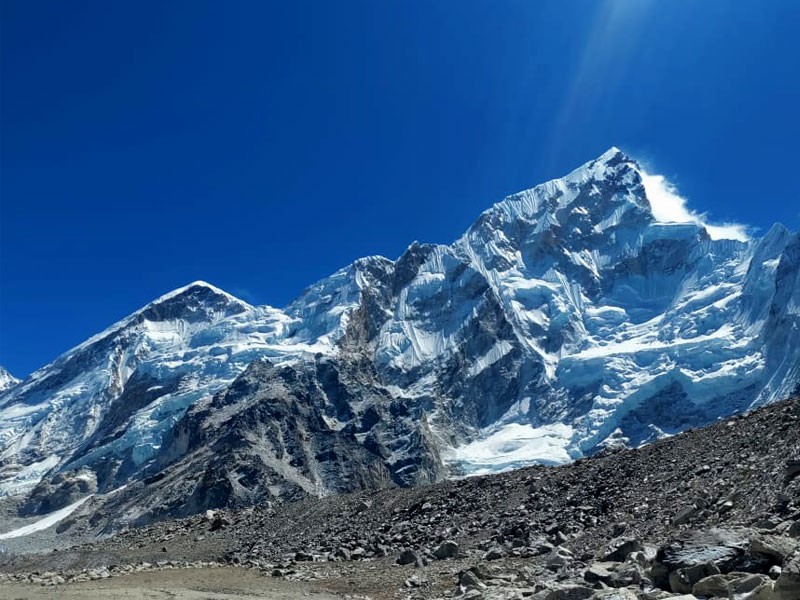
Consult a Doctor Beforehand
It is recommended that you see your doctor before undertaking the trek to Everest Base Camp because of the safety concerns that are inherent in such treks, especially if you have some health issues. It would be a good idea to consult a physician, especially if you are suffering from a known medical condition or have specific questions on altitude sickness prevention and control, fitness to venture on the trek, and recommended immunizations and drugs to be taken. They can also provide consultancy on handling common illnesses when they are affected by altitude and even offer an outlook on initial management and procedures. Since one requires proper physical and medical health to undertake the challenges of the trek, a company with such a proactive health policy enables the trekkers to make the most out of it.
Grasp Enough Knowledge about the Trails
To have enough information or ideas regarding the trails during an EBC trek, one must gather or find maps or guidebooks about the trek. This also ascertains the end-to-end trail profile, distances between each camp, and the layout of that day’s hike to devise your strategy and execution period. Besides, consulting with official tour operators and experienced travelers or local guides can gather helpful information, including recommended routes, estimated costs, possible climate changes, and the nature of the trail or newly formed obstacles. Monitoring changes in altitude and recognizing when to go up or down is very important, especially for acclimatization, and identifying the location of the nearby first aid or local accommodations could be very helpful. With more information and knowledge on the trails one wants to cover, one can handle the trip well and get the most out of it.
Use a Professional Trekking Agency
In the following points, it shall, therefore, be very necessary that people take a professional trekking agency while undertaking the Everest Base Camp trek: The services of a reputed agency are backed by well-trained guides who know all the challenges of geography, climber, and culture of that place, which also makes the journey safer as well as more revealing. They also take care of minor formalities like permits, accommodation, food, and water so that the trekkers focus mainly on the journey and explore the possibilities along the way. Moreover, a company can get help from various agencies, including emergency services, medical services, and probably evasive measures. In summary, their knowledge and assets improve the trek’s safety, accessibility, and fun over its otherwise possible standard version.
Pick the Best Guide
There are essential factors to consider for your guide during your trek to the Everest Base Camp, so choosing the right guide will determine whether you will have a safe and enjoyable trip. Ensure that the guide you select possesses the appropriate license, has prior experience with the topography and high altitudes, and has received several favorable reports from customers. They should know about first aid and precautions for altitude sickness in RHIPS. They should be able to communicate frequently and effectively with you, have and comprehension of your needs and personal style, and must know about any specific conditions you could have. For a better sense of security and to make your adventure truly enjoyable due to the explanations of all the details and stories behind them, it is much better to have a reliable guide by your side during the journey to the base of the highest mountain in the world.
Prepare Yourself for the Cold
A nice trick to wearing layers is that the first layer should be made from a material that will help wick the moisture away from your body, the second layer should insulate your body, such as using a fleece jacket or down jacket, and the last layer should be waterproof and windproof to protect you from the harsh elements. Thermal wear, including T-shirts and long johns, quality gloves, a cap or beanie, and an appropriate warm sleeping bag for winter, is recommended. Also, it is advisable to have proper insulated waterproof trekking boots with decent ankle support; it is also advisable to have a down jacket and sleeping bag, and these are available in Kathmandu or Namche Bazaar if you haven’t got this type of clothing for the cold season.
Stay Hydrated
Chemically, the effect means that at high altitudes, the body loses water faster than it can be replenished due to humidity and breathing rate. In addition to replenishing fluids, adequate water intake assists in preventing the contraction of altitude sickness, enhances endurance, and facilitates the body’s adjustment to higher altitudes. A gentle suggestion is to consume at least 3-4 liters of water daily, along with solutions containing the lost electrolyte minerals. Water: Carrying your water bottle and using purification tablets or filters guarantees potable water at all times on the trek. In this manner, one can improve the hiking experience and even minimize common health-compromising issues encountered during a trekking adventure.
Carry Water Purifiers
This refers to portable water filters or purification tablets, which can be easily packed and compact. The water sources on the trek are often contaminated, meaning the water to be consumed must be purified to eliminate waterborne diseases. The first option is preferable to integrate a system that addresses bacteria as well as viruses, since water quality may be unpredictable. Lastly, drinking water mostly comes in handy for acclimatizing and bodily health, so it is invaluable to have a dependable means of purifying water regardless of where you may find yourself on the trail.
Bring some Protein Bars
Carrying protein bars for a quick snack during the Everest Base Camp Trek could be a great idea since they are a convenient energy source when hiking. These bars are very compact, can easily be carried around, and give a boost of protein to muscles to keep trekkers going throughout the trek. Choosing those with good carbohydrate, protein, and fat content is ideal for having enough strength to endure extended hiking. They also come in handy for snacking during breaks or while moving around, thus making you always ready for whatever you may come across when engaging in high-altitude trekking.
Try Every Piece of Gear before the Trek
There’s nothing like experimenting with every gear during training/climbing to confirm that all are in good condition and that they can fit comfortably. This includes your hiking boots or shoes, as they are usually referred to, which should be comfortable shoes worn as much as possible to avoid blisters on your feet during the hike. The backpacks must also fit perfectly on the hiker’s body stature, and the weight must be evenly distributed and tested before the hike. To avoid an issue with runs during a trekking activity, wearing layers of clothing in different weather can also help one know how to regulate the temperature on the trail. In the act, you will have the opportunity to check on all your equipment, including trekking poles, water treatment equipment, and headlamps, among others, in order to identify if there are any problems that you can sort out before starting your trek, which builds up confidence in the equipment.
Know the weight limits for Lukla's flight
because the Lukla flight is short and involves using a small aircraft for passengers and baggage. Therefore, it is essential to know the weight limits while doing an Everest Base Camp trek. Most airlines will allow a maximum of 10 to 15 kg per person for checked-in baggage in the Kathmandu to Lukla flight, in addition to the hand carry bag. Going beyond this is likely to incur an extra fee or, in some cases, means you must leave luggage behind. Compliance with these limits enables safer flights, not only for you but also for other passengers. Filed Under: Social Media Tagged With: flight, flying, limits, pressure, safety . Fourteen kilos is the maximum weight each checked bag should weigh, and it’s wise to adhere to this by packing only the essential items.
Please don't pack unnecessary items.
Every ounce truly counts and will make a difference to your endurance and fun throughout the trail. You can concentrate on the necessary items, including only items, including quality trekking equipment and apparel, warm and versatile clothing, basic first aid, and snacks. It is time to put luxury items and peripheral devices into a drawer and use them only when needed. As you pack, think of ‘twice-use’ items like utensils that you can use more than once without washing, clothes worn for drinking coffee in the morning, to work, then for a walk, etc.
Remember, you can wash clothes wherever you are. They also load efficiently because there is no need to carry much weight. It only takes energy and the desire to make it to the base of the tallest mountain in the world—the Everest Base Camp!
Carry cash
Generally, for daily expenses, it's advisable to have cash in the local currency, Nepalese rupees, and US Dollars in smaller bills. It is better to change money at Kathmandu or on the route, if available in places like Namche Bazaar, but ATMS are not common on the trail. Take an arrangement of dividing the cash and store it in different pockets or containers, like a money belt or waterproof pouch, to avoid complications in case one is torn or gets stolen. Also, having some loose change on you means that throughout the hiking trip, you are not stranded for where to earn pocket money to buy food, lodging, or other expenses on the trail.
Carry Extra Money
Most importantly, travelers are advised to carry money in NRs and credit/debit cards. Banking services are limited, but coin-operated Automatic Teller Machines (ATMs) exist within some of the towns the trail passes; however, these facilities may sometimes go offline because of power or network failure. So, providing adequate cash in the form of a cash balance to cater to other factors such as food, shelter, and other incidents is best. To avoid falling victim to pickpockets and losing your money, it is recommended to wear a waterproof or theft-resistant wallet or money belt and, if possible, spread the money across several pockets or bags. It helps arrange for the funds and other financial matters in advance to leave you with no stress of managing the cash for this trek while on the trek.
Expect Flight Delays
Preferably, to avoid disappointments, travelers must prepare for flight delays, especially for the Lukla flight. Road conditions in the Himalayas are challenging, and you can experience complex weather changes quickly; this sometimes results in cancellations or postponed flights from Kathmandu to Lukla. Such delays might last for several hours or even days, and such hitches might cause significant harm to your trekking program. To avoid inconveniences and stress, don’t rigidly schedule a trip, as it is still possible to face some delays – for example, between connecting flights or with reservations for a hotel or meal. I have found it possible to incorporate some patience and have extra days in my schedule to effectively encounter these challenges and ensure more joyous and problem-free trekking.
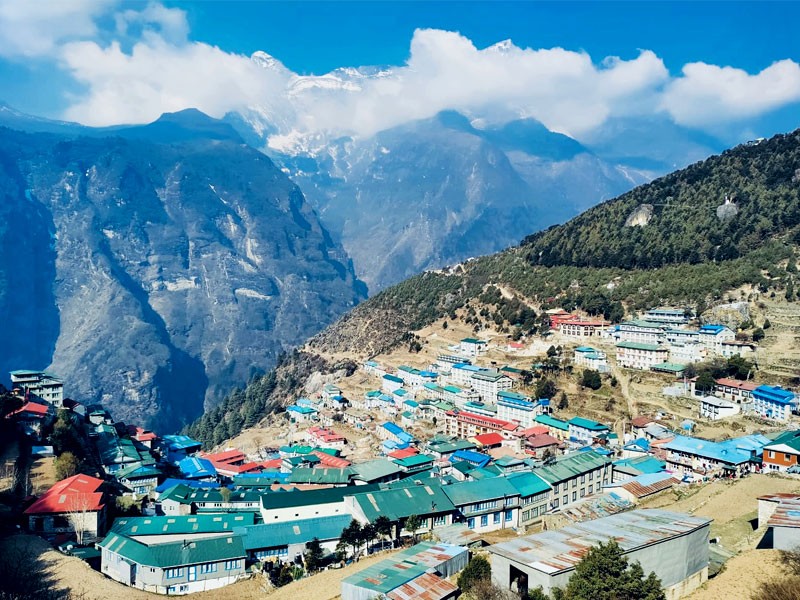
Be Prepared for a Flight Diversion to Ramechhap During Peak Seasons
It has been witnessed that flights to and from Tenzing-Hillary Airport at Lukla, which is usually the gateway to the EBC trek, are most likely to be influenced by the precipitation and snow during the spring and autumn periods, when many people prefer to go on treks. This comes to light as many flights are forced to land at Ramechhap, about a 4-5-hour drive from Kathmandu. In case of such an eventuality, it is still recommended that more time be set aside for traveling and that pre-arranged ground transportation to/from Ramechhap be made. This will help to avert any problems and guarantee that your trek begins on a promising note.
Carry Appropriate Trekking Gear
As apparel is essential to safety and comfort in the aesthetic experience of the Everest Base Camp trek, it can be said that carrying the appropriate trekking gear is necessary due to its influence on the success of the trek. It is recommended to wear multiple layers to help with sudden temperature changes – during the day, it can get cold, but nights can be warm; to bring appropriate high-quality leather shoes for hiking as the paths are rough and steep; and to take a solid backpack to store all the necessary equipment. Further, equipment like a suitable sleeping bag, trekking poles, and first aid kits is essential for managing the trek's physical stress and other possible complications. In so doing, it will be easier for the traveler to effectively handle the extreme and unfriendly weather conditions and high altitude; at the same time, appreciate the scenery and come across aspects of cultural interest and significance.
Avoid Smoking and Drinking Alcohol
Smoking and alcohol consumption also impact the level of moisture in your body. Since altitude sickness is characterized by a low oxygen level in the bloodstream, it is made worse by cigarette smoking and excessive alcohol consumption when one is at high altitude. Furthermore, these substances are likely to affect decision-making abilities, physical balance, and coordination, thus increasing the tendency to fall out while maneuvering through rugged terrain. It is also validated that to get the whole experience of the treks, one has to embrace the natural high by taking water and herbal teas along the journey and being aware of the beauty of the Himalayan ranges.
Wear Layers of Warm Clothes
The principle of layering involves wearing a moisture-wicking base layer that keeps sweat out of your skin; one puts on an insulating layer, such as a fleece or a down jacket, to maintain body heat; the final layer should be an outer garment made from waterproof and windproof material to protect against rain, sleet, snow, and penetrating winds. This layering system lets you put on or remove clothing as you want since mornings, evenings, and afternoons could be cool yet warm during the LOCAL TREK.
Carry a Torch
When choosing a headlamp, select one that is lightweight and long-lasting, but make sure that you have easy control over it such that you can cycle through the settings without needing to use your hands. Carry additional batteries or a charger on the trek for a light source to remain operational throughout the journey. Also, it is highly advisable to carry some portable illumination in an emergency; a small torch will suffice. You'll be able to secure your torch in an area of the pack where it is comfortable to reach, especially when you need it most, for instance, in the middle of the night or during a rainy session.
Carry Waterproof Garments
It is always advisable to wear waterproof gear while trekking to the base of Mount Everest because the climate there is very volatile. It is advised to bring a castor oil polythene waterproof jacket and pants or any other good quality smooth waterproof material that can protect you from rain, sleet, or wind. Select durable but light materials that can breathe well, as this can be essential during a strenuous hike. Also, protect your equipment and other belongings from getting wet by entirely covering your backpack and other gear with waterproof material or dry bags. It will assist you in preparing your apparel to remain warm and dry throughout your trip, especially during the monsoon period or other unfavorable weather conditions in the Himalayas.
Carry Entertainment Items
A small travel-sized game or a deck of cards that entertains you, or gadgets like a Kindle for reading, can pass the time at tea houses during evenings. Also, having hundreds of songs with you via CDs or MP3 format on your phone or MP3 player can make the journey exciting while hiking for many hours. Please don't forget to maintain equal proportions of fun with the load, even if this comes in the form of increasing the load on the backpack.
Carry Dry Shampoo and Soap
Select products made from lightweight and biodegradable materials to have a less damaging environmental impact. Dry shampoo can provide adequate cleaning between hair washes, and soap sheets/travel bar soaps are portable and water-saving for hands and body. Please place them in a waterproof, sealed jar so they will not spill over and shield them from undesirable incidents. This implies that one rolls dirty most of the time, even when there are few water sources to freshen up.
Bring Toiletries like Toilet Paper and Wipes
Sanitary conditions imply that some toilets you may use during the trek are very simple. Many teahouses might include squat toilets or do not offer toilet paper. You are carrying your supply warrants, and it can be handled if and when there is an emergency. Stationery such as wet wipes comes in handy when one needs to do a touch-up in case taking a bath is not close by. Please take a small sealable plastic bag to dispose of paper and wipes, and ensure ‘zero impact’ as per Leave No Trace etiquette. For these essentials to be assured in one’s packing list, trekking has a better shot at being more comfortable and hygienically enjoyable.
Carry Gloves
Being obliged to pack the necessary assortment while preparing for the Everest Base Camp trek, gloves can be required for warmth and protection. It's recommended to bring two pairs: For instance, there may be lightweight gloves for use in mild climates and a tougher one in cold climates or high altitude areas. Carrying light gloves is essential, as the temperature during the first few days may not be freezing, and wearing full-fingered gloves will limit the hiker’s gripping abilities. Suppose you are climbing up and out of the desired temperature zone. In that case, it is essential to find a way to shed the wet gloves for warmer and insulated ones to shield against the actual temperature or the wind chills—besides, specially designed waterproof gloves, especially when going out in the snow or during the rain. To provide the best versatility of a trekking experience, carrying both types is safe and sufficiently prepared for the Everest Base Camp trek.
Bring Sunglasses
It’s worth noting that anyone undertaking the Everest Base Camp trek should wear sunglasses. This results in severe effects of ultraviolet light and the sun due to its hereditary altitude and the reflection of the snow. Choose glasses with UV protection and polarized lenses to eliminate chances of eye discomfort due to glare or any effects of Ultraviolet radiation. Non-conductive styles are helpful when light is to be kept out around the perimeters of the window area. To protect these from breaking when not in use, a strong carrying case will ensure you have clear vision without any eye Strain when carrying out your treks.
Consider taking multivitamin tablets and Vitamin C, Vitamin B Complex, and Garlic.
The weather and hardness of the trail will always pressure your immune system, which means you need a boost of nutrients to provide your body with. Vitamin C assists in enhancing immunity and facilitates the absorption of iron, which is particularly crucial when it comes to energy production at high altitudes. A person must consume Zinc, Vitamin B Complex, and Vitamin C since they assist in fighting fatigue and sustaining the nervous system function. Garlic helps boost the immune system and prevents altitude sickness. Incorporating these supplements into your daily life is essential to improve your health and, thus, your ability to cope with trekking exercise.
Use Trekking Poles
They offer great support, especially in areas with irregular surfaces and complex slopes, as well as during upward or downward inclinations, which may cause stress to your knee and other joints. When using trekking poles, please ensure they are at the right height, where your arms are bent, to form a right angle when holding them. To prevent them from dropping, tie the two ends of the poles to the two ends of the wrist strap, and this ensures that you have the least amount of weight transferred from the poles to the strap. Trekking poles are also used when hiking to help balance, especially when trekking on steep terrains or even when crossing over some water bodies. They can test you and help you become a fitter personality when you are on a journey like a trek to the Everest Base Camp.
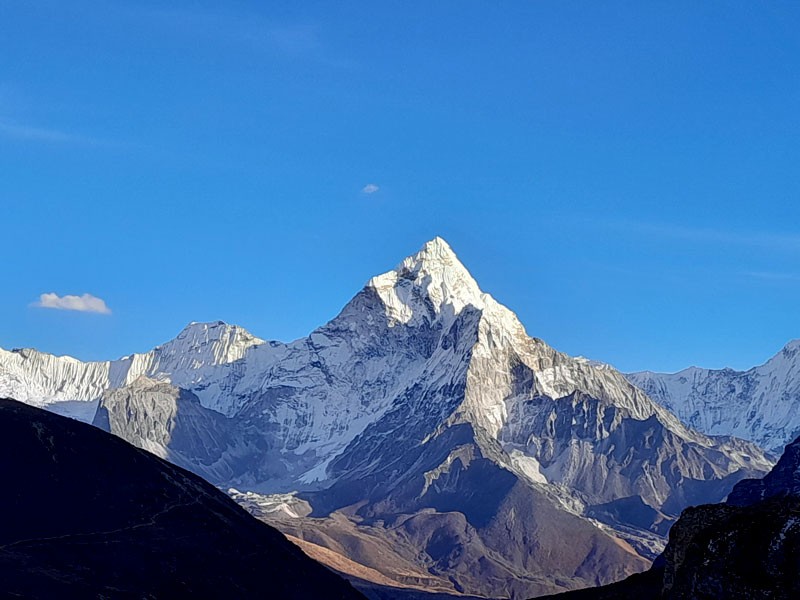
Have a Satellite Phone on the Team
As for communication during the trek, the majority of the route indeed offers a cell phone service signal, but it is often weak and unstable. Sat-phone helps to guarantee that you have an available backup for communication in the event of an unforeseen catastrophe or any other state of conflict or calamity where connecting with the outdoors is pivotal. It gives confidence and security that it can be done instantly if a situation requires one to seek help and advice, or if the conditions constantly fluctuate in largely remote areas or high terrain. Before the trekking exercise, you should try to use the satellite phone and ensure you understand how it works, since you will use it during the trekking exercise, especially in an emergency.
Protect Yourself from Sunburn
First, protect your head and face by wearing a broad-brimmed hat, and protect your eyes with UV-protective sunglasses. Apply lotion that contains at least SPF 30 on your face, neck, and hands, and apply it frequently to the parts of your body that you have been exposed to sunshine after periods of exercise or washing. Carrying out activities with exposure to the sun during the day should also involve using light-colored, light, long-sleeved shirts and long pants made from materials that are conducive to breathing and afford high protection from UV radiation. Additionally, wear a buff or a bandana, which can be fastened around your neck and face to shield you from the scorching sun when hiking through mainly sunny portions of your trip.
Have acclimatization days
Acclimatization days are essential to break the journey and acclimatize to the effects of high altitude to minimize the incidence of high altitude illnesses. Such days may imply short but steep stages, so the body can acclimatize before it goes further up. The client should also avoid alcohol, and it is crucial to pay attention to our bodies as we have signals showing whether we need water or not. Many frequently have extra days in Namche Bazaar and Dingboche, which remain for touristic purposes to get familiar with the local culture and explore mesmerizing views. Thus, to make trekking comfortable, safe, enjoyable, and memorable, taking breaks during the journey to the base of the highest mountain on earth is necessary.
Do not use oxygen unless needed.
Using oxygen accessories can cover this up and, alas, slow down the normal process of the body adjusting to the high altitudes. One needs to pay attention to one's body and ensure it recovers with the correct number of rest days and climbs at the right pace. Stay hydrated, do not over-exert yourself, and be mindful of the signs of raccoon ASC-6. Despite the availability of oxygen for handling the situation, if you notice severe symptoms, ascend and get proper medical attention without using oxygen to remedy the problem temporarily. Following all those points above, NAS about sweat and fluid intake will enhance your chances of having a delightful trip to the Everest Base Camp.
Maintain a slow pace while hiking.
It takes an average of nine days to complete the permitted distance for the Everest Base Camp trek, and hence, it is important to avoid rushing through the trek to avoid altitude sickness. Some suggestions to conquer this principle include Daily upward travel so that one can adjust to the altitude; when up in the mountains, the ideal thing to do is to hike high and sleep low. The only criterion for exercising intensity is the ability to carry out a conversation while walking – the “talk test.” It is also helpful to acclimate your body to the thin air by descending gradually and thus save energy on the long trail with many inclines ahead. Be hydrated and heed your body's feedback to prevent you from overdoing it.
Travel with a team
Set specific expectations for those involved right at the start of the day so that all of you know what is expected at the beginning, how much work is to be accomplished, and if anyone is likely to face any challenges. Help and encourage one another during the mountain challenge, especially during phases of climb with lower oxygen pressure or changes in altitude. Be understanding and relaxed because dynamics may be different, and be prepared to know that you will take turns to make decisions. There is strength in numbers, which means that everyone has a backup where you can share both the supplies and the duties; most importantly, you need to look at the health of the people on your team, where altitude sickness is a concern.
In conclusion, the Everest Base Camp trek is a remarkable journey that combines physical endurance, mental resilience, and an appreciation for nature’s magnificence. By following these essential tips, such as thorough preparation, proper acclimatization, and effective team coordination, you can navigate the challenges of high-altitude trekking with greater ease and enjoyment. Ensuring you have the right gear, staying aware of your health, and fostering strong group dynamics will enhance your safety and enrich your overall experience. With thoughtful planning and a positive mindset, the trek to Everest Base Camp can be a fulfilling adventure, leaving you with unforgettable memories and a profound sense of achievement.
